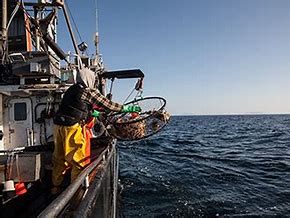Adoption of advanced technologies critical to spur growth in India’s fisheries sector
As the Indian Government prioritises the rapid development and modernization of India’s fisheries sector with policy reform measures, including the transformative Pradhan Mantri Matsya Sampada Yojna (PMMSY), the Centre for Strategy and Leadership (CSL), a leading Indian think-tank, has released a whitepaper on the adoption of modern digital technologies to spur growth in this important sector.
The CSL whitepaper— ‘IoT in the fisheries sector in India’— discusses the importance of new technologies for India to realize optimal green growth in the fisheries sector. This is especially important as digital advancements, such as the Internet of Things (IoT), evolve and impact broad economic and social sectors.
 |
| Adoption of Technology Is Key To Optimising Green Growth In Fisheries |
The whitepaper focuses on how technologies like IoT optimise the management of scarce resources and increase the productivity of the Indian fisheries industry as a whole.
The fisheries sector provides livelihood to approximately 160 lakh (1,60,00,000) people at the primary level and almost double that number along its entire value chain. India is the second-largest fish producer in the world, contributing 5.43% to world fish production, while fisheries are one of the most committed agricultural and cooperative sectors in the country.
Unfortunately, at this time, the fisheries sector faces three major challenges: ensuring fishermen safety while out at sea, maintaining national security by monitoring international borders, and prioritising fisheries as a robust economic activity. Unless digitisation and advanced technology are deployed consistently, these challenges will remain and continue to be barriers to productivity, growth and safety long term.
On the findings of the whitepaper, Vikas Sharma, Director and Chief Executive, Centre for Strategy & Leadership, said, “India, which has 65% of its population under the age of 35 years, makes it the world’s most enviable workforce pool. As per studies, the IoT sector will boom to grow to a more than $20-billion market by 2022. We believe India’s fisheries sector currently in the middle of a transformation would derive great benefits by the adoption of modern technologies such as IoT when compared to other areas."
Therefore, bringing IoT to the centre of the sector’s growth model should be prioritized. This will also show the way to create an inclusive strategy of public and private partnerships with an eye on creating millions of job opportunities in the fisheries and IoT-led sectors along with auxiliary industries, Sharma noted.
The whitepaper also points out that disruptive technologies, such as those being provided by Skylo, the world’s most affordable end to end solution connecting machine and sensor data via satellite, are critical to meet the demands of fishermen, boat owners, and regulators as industries innovate according to the Prime Minister’s initiatives.
Such technologies provide the much-needed edge to keep fishermen safe, enable higher productivity, and help monitor national borders for safety. Skylo is being deployed throughout India and has proven useful to the fisheries sector.
Parthasarathy Trivedi, co-founder and CEO of Skylo, said, “Digitization and connectivity are key to achieving our Prime Minister’s goal of doubling fisheries production under the Blue Revolution. Technology will transform the fishery sector in three main ways: safety, productivity, and sustainability. At the heart of this transformation is access to data and cloud-based analytics for unconnected fishing vessels and aquafarms - there is an immediate need to prioritize the adoption of modern digital technologies in the sector.”
The future of fisheries management depends on technological innovation. Improvements in digital technologies now allow innovative monitoring tools to manage fish stocks better at every phase of the value chain. Technology adoption in such situations is still limited primarily due to high cost, therefore presenting challenges for fishery management authorities to adopt the best in data-sharing and communications systems.
The fact that there are also just a few people trained to handle such devices and technologies has made the process further complex. These challenges in the fisheries sector can be overcome through a uniform use of technology, making it easy and affordable for fishermen to deploy solutions.
The paper suggests that all value-chain stakeholders need to be involved in the decision-making process, from fishermen to boat owners to government organizations. New technologies need to be applied in a progressive manner to better adapt to changes.
.jpg)


Comments
Post a Comment